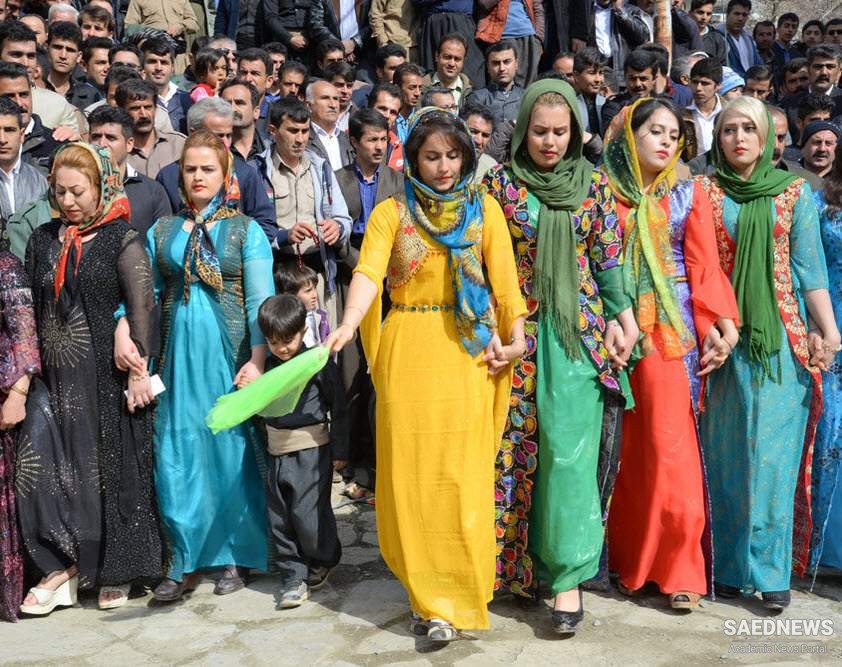Kurdistan province is located in the west of Iran bordering Iraq. The highest mountain which is located in the southeast of Saghez is called Chahār Cheshmeh with a height of 3173 meters above the sea level. The climate is temperate and mountainous which provides rich lawns for nomads who are mostly involved in husbandry. The common handicrafts of this province include carpet weaving, drugget weaving, textile and local ornament making.
The population of the province consists of Kurdish and Āzarīs ethnic groups who speak their respective dialects. The Kurds are descendents of Aryan tribes who immigrated to this land a few thousand years ago. In Sumerian, Akkadian and Assyrian inscriptions, the word “Kurd” has been used many times.
The vegetation of this province includes lawns and forests which stretch from the northwest to south west of this province with an area of 320,000 hectares covering the cities of Mārīvān and Bāneh.
Local Dances
Local dances are remarkable in terms of their themes and form. These dances are performed in happy ceremonies. They are mostly group dances and have roots in local beliefs and traditions. One form of dance is called Jarmāgh which is common among the people of cities and villages.
Orāmānāt Village
This village is located in the southwest of a town called Marīvān in a steep valley. The houses are commonly made of stone. The climate of this region is cold, especially in winters.
Zīvīeh Hill (Zīvīeh Tape)
This hill was a castle located at 42 km distance to the north east of Saghez city. The city, with the old name of Izirtā, was the capital of the Median Kingdom (c. 678-549 BC). This city was destroyed by the second king of Assyria. Later the Saka tribes rebuilt it and adopted it as their own capital. From the hill, a three-storey building with painted pillars, ornaments, carved ivories and coffins belonging to Saka kings have been discovered.
Zarīvār Lake
This lake which is 1285 meters above the sea level is one of the most attractive sites in the west of Iran, located two kilometers to the west of the town of Marīvān. It is surrounded by dense forests.
Vakīl ol-Molk Structure
This is one of the oldest and most visited buildings of Sanandaj city. This is a private heritage of the Vakīl family who have always been among the notable attractions of Kurdistan. This building dates back to the Zand dynasty (1751-1794) and consists of a garden, courtyard and some mansions.
Karaftū Cave
The cave is located in the Obāt region of Divāndarreh town in a castle with the same name. This cave was the temple of Heraclius, 2000 years ago. Structures and inscriptions from the Parthian, 300 BC have been discovered at the site. On one of the walls of this cave the name of Heraclius—a deity of Greek pantheon-- has been carved and beneath it there is a painting of a hunter, hunting a deer. This painting is a memorial to the victories of Gūdarz, one of the kings of the Parthia who defeated Mehrdād, the king of Armenia


 North Khorasan Province, North East Iran
North Khorasan Province, North East Iran














































